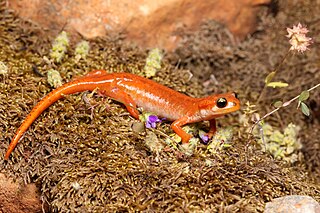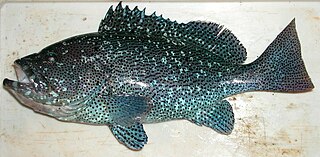| Angiostoma | |
|---|---|
| Scientific classification | |
| Domain: | Eukaryota |
| Kingdom: | Animalia |
| Phylum: | Nematoda |
| Class: | Chromadorea |
| Family: | Angiostomatidae |
| Genus: | Angiostoma Dujardin, 1845 |
Angiostoma is a genus of parasitic nematodes in the family Angiostomatidae.
| Angiostoma | |
|---|---|
| Scientific classification | |
| Domain: | Eukaryota |
| Kingdom: | Animalia |
| Phylum: | Nematoda |
| Class: | Chromadorea |
| Family: | Angiostomatidae |
| Genus: | Angiostoma Dujardin, 1845 |
Angiostoma is a genus of parasitic nematodes in the family Angiostomatidae.
Species in the genus Angiostoma include:
Parasitic species of turtles:
Parasitic species of amphibians:
Parasitic species of gastropods (slugs and snails):

Limacus flavus, known commonly as the cellar slug, the yellow slug, or the tawny garden slug, is a medium to large species of air-breathing land slug, a terrestrial pulmonate gastropod mollusk in the family Limacidae.

Heterorhabditis is a genus of nematodes belonging to the order Rhabditida. All species of this genus are obligate parasites of insects, and some are used as biological control agents for the control of pest insects.

Schizoglossa novoseelandica is a predatory species of air-breathing land slug or semi-slug, a terrestrial gastropod mollusc in the family Rhytididae. It is the type species of the genus Schizoglossa and is found only in New Zealand. The survival of this species is not threatened; it is not listed in the 2009 IUCN Red List nor is it in the 2005 New Zealand Threat Classification System lists.

Limax cinereoniger, the ash-black slug is a large species of air-breathing land slug in the terrestrial pulmonate gastropod mollusc family Limacidae, the keelback slugs. This is the largest land slug species in the world.

Luschan's salamander or Lycian salamander is a species of salamander in the family Salamandridae. It is found in the southwestern Anatolia in Turkey and adjacent Greece, in the island of Kastellorizo and its satellites.
Agfa flexilis is a species of parasitic nematode.
Angiostomatidae is a family of parasitic nematodes.
Agfa is the only genus in the parasitic nematode family Agfidae. There are only three known species: Agfa flexilis, A. morandi and A. tauricus. They are all obligate parasites in terrestrial gastropods.
Angiostoma schizoglossae is a species of parasitic nematodes.
Angiostoma carettae is the first species of nematodes known to inhabit turtles. Its specific name comes from its presence in loggerhead sea turtles.
Troglostrongylus is a genus of nematodes which are metastrongyloid lung parasites of domestic cats and small wild cats through the Middle East and North America.

Phasmarhabditis hermaphrodita is a facultative parasitic nematode that can kill slugs and snails. It belongs to the family Rhabditidae, the same family as Caenorhabditis elegans.

Huffmanela ossicola is a parasitic nematode. It has been observed in the branchial arch bone and the spinal cord bone of the labrid marine fishes Bodianus loxozonus, Bodianus busellatus and Bodianus perditio caught off New Caledonia. This is the first species of Huffmanela reported from bone tissue. Its eggs are only available for the continuation of the life-cycle after the host's death.

Pristionchus is a genus of nematodes (roundworms) in the family Diplogastridae that currently includes more than 50 described species. They are known mainly as non-parasitic associates of insects, especially beetles, while others have been reported from soil, organic matter, or rotting wood. The genus includes P. pacificus, a satellite model organism to the well-studied nematode Caenorhabditis elegans.
Strongyloides dasypodis is a parasitic roundworm infecting the large intestine of the armadillo, Dasypus novemcinctus. It was first described from Louisiana.

Philometra cyanopodi is a species of parasitic nematode of fishes, first found off New Caledonia in the South Pacific, in the gonads of Epinephelus cyanopodus. This species is characterized mainly by: length of spicules and length and structure of its gubernaculum; structure of male caudal end; body size; location in host and types of hosts.
Philometra lagocephali is a species of parasitic nematode of fishes, first found off New Caledonia in the South Pacific Ocean in the abdominal cavity of Lagocephalus sceleratus. This species is characterized mainly by the length of its spicules, length and structure of its gubernaculum, body size, location in host and types of hosts.

František Moravec is a Czech parasitologist who specialises on the Nematodes, especially the nematodes parasites of fishes. His research is mainly in the field of taxonomy of the Nematoda.
Necromeny is a symbiotic relationship where an animal infects a host and waits inside its body until its death, at which point it develops and completes its life-cycle on the cadaver, feeding on the decaying matter and the subsequent bacterial growth. As the necromenic animal benefits from the relationship while the host is unharmed, it is an example of commensalism.